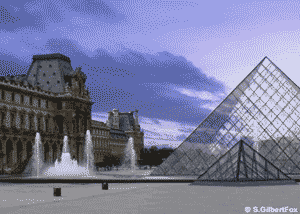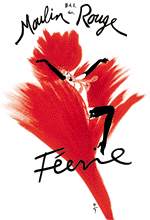Art in Paris

- SUBSCRIBE
- ALREADY SUBSCRIBED?
BECOME A BONJOUR PARIS MEMBER
Gain full access to our collection of over 5,000 articles and bring the City of Light into your life. Just 60 USD per year.
Find out why you should become a member here.
Sign in
Fill in your credentials below.
 After, “Where should I eat?” the question I’m most frequently asked by people set to embark on a trip to Paris is “What exhibits are there to see?” In fact, without access to the weekly arts and culture publications from Paris (Pariscope, l’Officiel du Spectacle, and Zurban – none available on line but for Zurban’s list of films) it is not a simple matter to find a listing of exhibitions. Much of the tourist oriented exhibition information available at the French Tourist Office on line, is out-of-date and provides you with scant indication about the contents of the exhibitions. Figaroscope.fr provides a search engine to the museums of Paris, useful only if you can cross-reference their site with a guidebook to the city. As an alternative, you can try a direct search of the frequently unfriendly web sites of individual museums. It’s very time consuming and often frustrating.
After, “Where should I eat?” the question I’m most frequently asked by people set to embark on a trip to Paris is “What exhibits are there to see?” In fact, without access to the weekly arts and culture publications from Paris (Pariscope, l’Officiel du Spectacle, and Zurban – none available on line but for Zurban’s list of films) it is not a simple matter to find a listing of exhibitions. Much of the tourist oriented exhibition information available at the French Tourist Office on line, is out-of-date and provides you with scant indication about the contents of the exhibitions. Figaroscope.fr provides a search engine to the museums of Paris, useful only if you can cross-reference their site with a guidebook to the city. As an alternative, you can try a direct search of the frequently unfriendly web sites of individual museums. It’s very time consuming and often frustrating.
I would like to attempt to rectify that situation. I hope to provide the readers of Bonjour Paris with my changing and ephemeral list of things to see, a list that promises to go beyond the six-minute tour of the Louvre as first described by Art Buchwald. Buchwald was, of course, making reference to several of the major monuments of art history held within the noble walls of that ancient castle: the Mona Lisa, the Venus de Milo, and the Nike of Samothrace. Since they’ve moved La Gioconda I’m not sure you can do a six-minute Louvre these fifty years later.
However, while I agree that it is important to see those works, this writer wants to convince you that it is important not to do it in six, nor even in ten, minutes. I do not want to encourage the ornithologists among you to check these objects off some kind of lifetime list. “Done that!” I would like to talk about just why you should have “done that” in the first place.
Standing in front of the Venus de Milo, a student once asked me “What’s so important about this”? You can’t get a more fundamental inquiry than that, of what importance, indeed. Clearly, importance is not necessarily self-evident and the  importance of a work of art is always better explained than left unsaid and misunderstood.
importance of a work of art is always better explained than left unsaid and misunderstood.
Examination and re-examination are essential when it comes to the museums of Paris. Among them are the least static, most dynamic art institutions I know. The state of flux goes beyond the multitude of temporary exhibitions to the permanent collections that have been re-organized, re-hung, and in some cases re-labeled as the museums change the configuration of their collections. It makes the job of the guidebook editor into a nightmare but is stimulating fodder for the writer of an electronic missive.
One such example is the Musee Jacquemart-André. Closed for near-to ten years, until 1997, this is a true gem that has actually been improved during its hiatus from the public. The direction of the museum was found with its hand in the till and there was a major scandale that forced the closure of the museum. It is now under the direction of the Institut de France, an enclave of ivory-tower intellectuals who, we trust, have no interest in monetary profit but only in scholarly development.
The entry fee is high but it includes an acousta-guide, available in several languages, which is one of the best that I have ever encountered. The French deserve credit; they assume a level of intelligence in their museum-going public that seems unheard of in America. You will enjoy the use of the guide.
The collection on the whole is of a very high quality. The married team of Jacquemart and André were extraordinarily lucky to have been collectors of art at the moment when so many major works came onto the market; which is not to say that they didn’t make some mistakes. Not all scholars, for example, accept the attributions to Donatello made for many of those sculptures on the first floor.
But what a coup to have been able to buy three Tiepolo (1696-1770) frescos of such beauty and finesse. And how fortunate that the conservators of the nineteenth century had already learned how to depose and transfer fresco paintings. These are works done on a layer of wet plaster applied to an existing wall. It must be wet when painted so that a chemical bond is formed between the paint and the plaster. To remove that painted layer, as here, almost two centuries after it was originally done for a residence in Italy, meant careful application of a linen support on the surface of the fresco and even more careful separation of the layer of plaster from the wall.
In Room Four on the ground floor, it is the ceiling that has been transferred, bringing with it the painting by Tiepolo. It uses the perspectival device, known by its Italian name “di sotto in su”(as if seen from below). The artist must calculate the perspective on the basis of the viewer who stands below it. An alternative device, but far less dramatic, would be to design the picture as a wall painting where you see the figures from the side, not from below. Pivot that wall painting onto the ceiling and it is decorative but lacks the vertiginous pull of “di sotto in su”.
A second Tiepolo fresco is on the wall at the top of the staircase to the first floor. This is a bravura and stupendous combination of portraiture, historical event, and artistic sense of humor. In spirit it descends directly from Mantegna’s frescos in the Palazzo Ducale in Mantua, painted some 250 years earlier.
Notice in particular, the figures at the balconies: women in the foreground, men in the back. These are the ancestors of the Goya (Met, NY) and Manet (Orsay, Paris) balcony paintings. A fresco such as this shows how Tiepolo was not only inspired by other artists but his work, in turn, served as a model for later painters.
The third Tiepolo in this collection is in the tearoom on the ground floor. If the line is not too long, and if you can get in to have some lunch or a spot of tea, notice Tiepolo’s perspectival devices here. He is a master of the decorative fresco that is designed to involve the viewer, whether ascending a staircase or seated below the fresco after savoring the glorious art in this beautiful nineteenth-century hôtel particulier.
www.ARTalks.com


